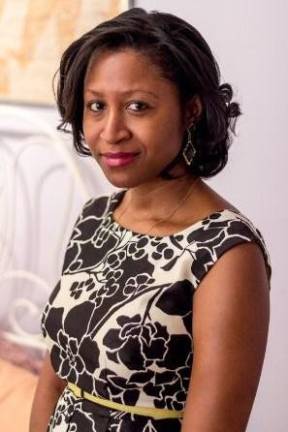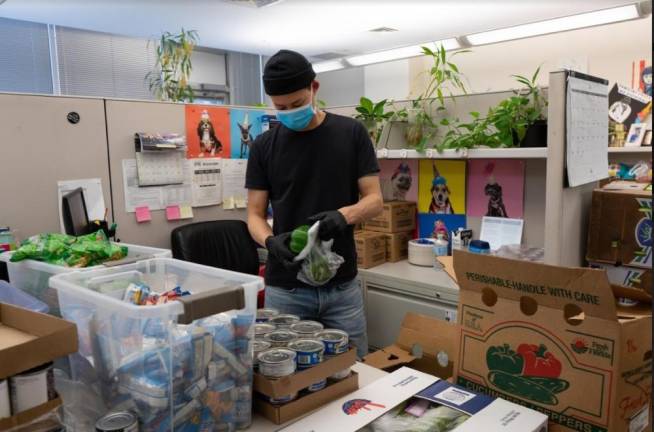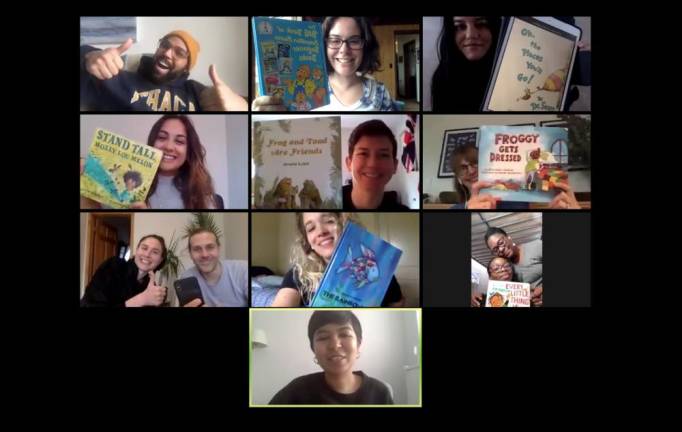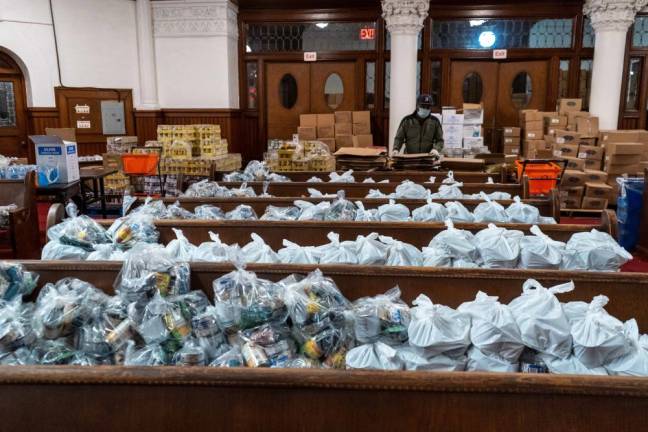“When the going gets tough, the tough gets going,” is Darline Lalanne’s explanation for the outpouring of service she’s witnessed from New Yorkers during the COVID-19 pandemic. New York Cares's mission of providing altruistic individuals from the five boroughs with opportunities to help those most in need has only been reinforced through the current crisis. More than 4,500 volunteers have devoted 15,000 hours on close to 800 projects since relief efforts started on March 16th.
As the director of Education and Family Programs at the nonprofit, Lalanne recognizes that the heart of a community is its schools. She is committed to our city’s students, who she said will likely miss six months of classroom instruction. Partnering with the NYC Department of Education, her team runs the program that provides volunteer assistance to 25,000 students in temporary housing, helping them with the new challenges posed during this time, such as how to use iPads that are now crucial tools for virtual learning. “The DOE has been getting over 2,000 calls per day from the tech side, so that partnership was extremely important,” she said. “This past Saturday, we made over 4,000 calls between 1:30 to 4:00.”
The Haitian-born Harlem resident also oversees many of the organization’s beneficial programs that are now operating online or on the phone. Volunteers reach out to seniors for wellness checks, assist immigrants who are preparing for their citizenship exams and host online yoga, Zumba and Judo classes for elementary school children.
When asked how one can volunteer with their 1,350 nonprofit and school partners, Lalanne said the best way is to go to their website and get a volunteer certification. “And once you’ve done that, you can sign up for many different projects both on and off the ground,” she said. “We’ve created so many different ways for you, as a New Yorker, to feel safe and know that you can give back.”
Tell us about the phone checks that are being done.
One pillar is mental health, especially during this time, not only for students, but adults. We’re all at different levels of what this is making us feel like. We’ve been able to support by doing what we call a phone-based model, where we call seniors, the most vulnerable population, to do wellness check-ins with them. We also have a partnership with the Department of Education, where we are supporting students in temporary housing. We are making calls and are considered volunteer tech ambassadors to ensure that students who did receive their iPad actually know how to utilize it. Virtual learning will be the least effective for the most vulnerable population due to lack of access and equity.
Now that doesn’t mean that we can’t still have an impact. It only means that students were not exposed to virtual platforms before the pandemic, compared to a student that went to private school where it was already imbedded into their curriculum. We do these phone calls Monday through Saturday, where we’re calling those families and ensuring that they received their iPads. We’ve found that on some days, we’ve had 80 plus volunteers sign up to do these calls.
With students now learning at home, how has New York Cares stepped in to help?
The data shows that students will be 30 percent behind compared to a normal school year. And imagine the ones who were already behind? And the ones who were above grade level, will not be anymore. When we talk about meeting pressing community needs, we are working in the black and brown community. We’ve actually launched several virtual programs to support students and families. There’s a reading club, where volunteers and students read together and have discussions. That’s about 45 minutes of additional reading support during a child’s week. It’s important that we get students active in physical fitness. During this pandemic, we know that students will be missing seven to eight hours a week of physical activity. We reimagined programs we already had, such as yoga and Zumba.
How is this work also helping educators?
Educators now find themselves tending to the emotional and psychological needs of the students. They are forced to take roles as adults because parents that are essential workers are working a lot more, or are sick or self-quarantined. The fact that we created a partnership with them, by providing that remote learning, has been a blessing, so they can continue to provide the psychological needs. We’re working with agencies such as BronxWorks, Title 1 schools like PS 171, out in East Harlem, doing reading programs for their first and second graders, who have already been identified as working below grade level. There is a large population of students there who are in temporary housing.
You run college prep, adult education and citizenship classes. Are those still going on?
Yes, they are. The reality is, when you are an immigrant, you are even more prone to not ask for services. It is extremely important that when we talk about education, we’re talking about it for the adults as well. We’ve actually run virtual sessions to prepare adults for the citizenship exams, so mock interviews to help them rehearse answering questions under pressure. We also started our sophomore skills program, which was already scheduled to start, and made that transition virtually, to strengthen the math and English skills of high school sophomores.
During the pandemic, New York Cares has served more than 450,000 meals through volunteer meal delivery programs. How do you accomplish this?
Many are in a situation where they don’t know where their next meal is. We are working with Title 1 schools that are also asking us, “Our families are hungry. What can we do?” We’ve connected them to food pantries that are around their communities. From March until now, we’ve been able to support different food pantries and community organizations providing food, such as Coalition for the Homeless, the Salvation Army of Greater New York, Project Hospitality, The River Fund, Florence E. Smith Senior Services, and many local churches and synagogues. They have their food, and our job as volunteers is to ensure that we are supporting by providing the food to the community. A lot of agencies have lost funding, so they need the manpower to actually give it out. That’s where we come in. We also have a Cars for COVID project that we run, where volunteers actually drive and deliver. There are over 600 projects on the food side so far that we’ve planned and are executing right now.
To volunteer, please visit www.newyorkcares.org



